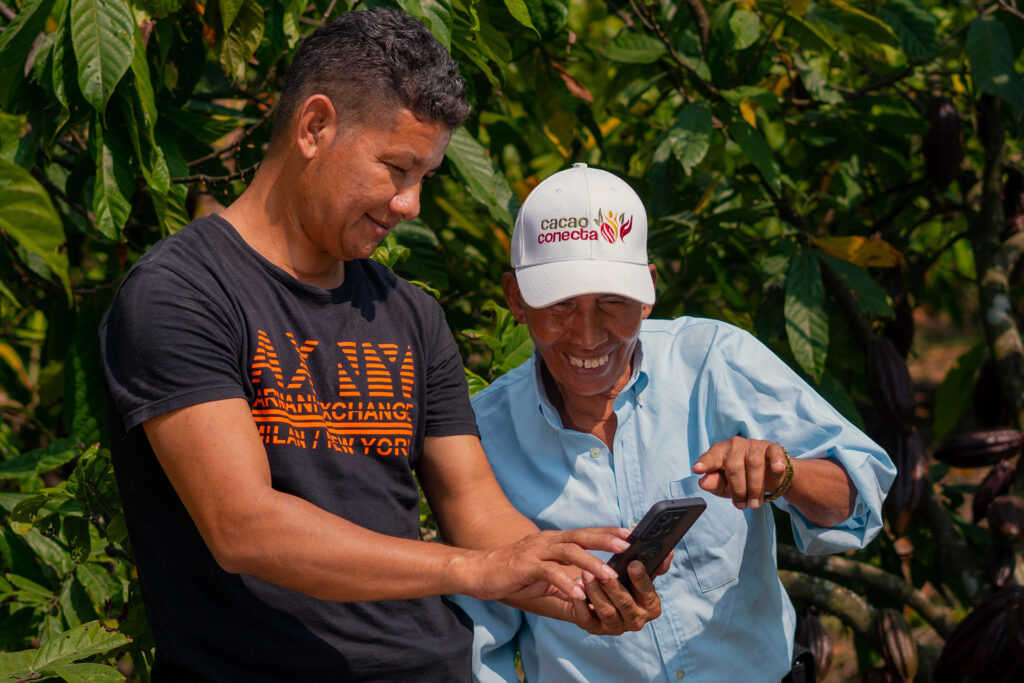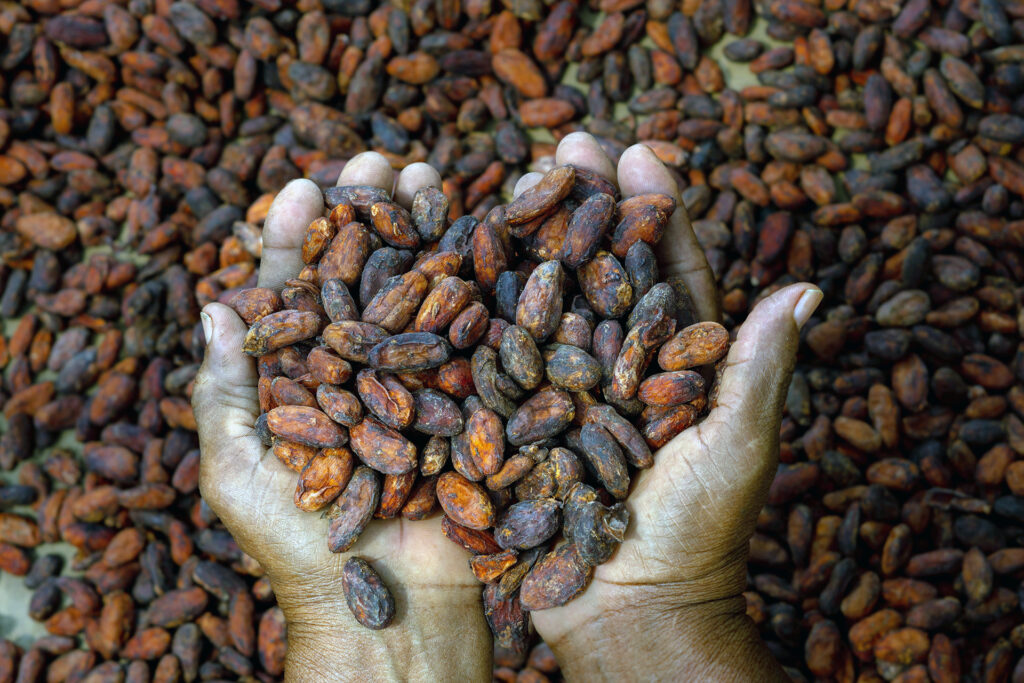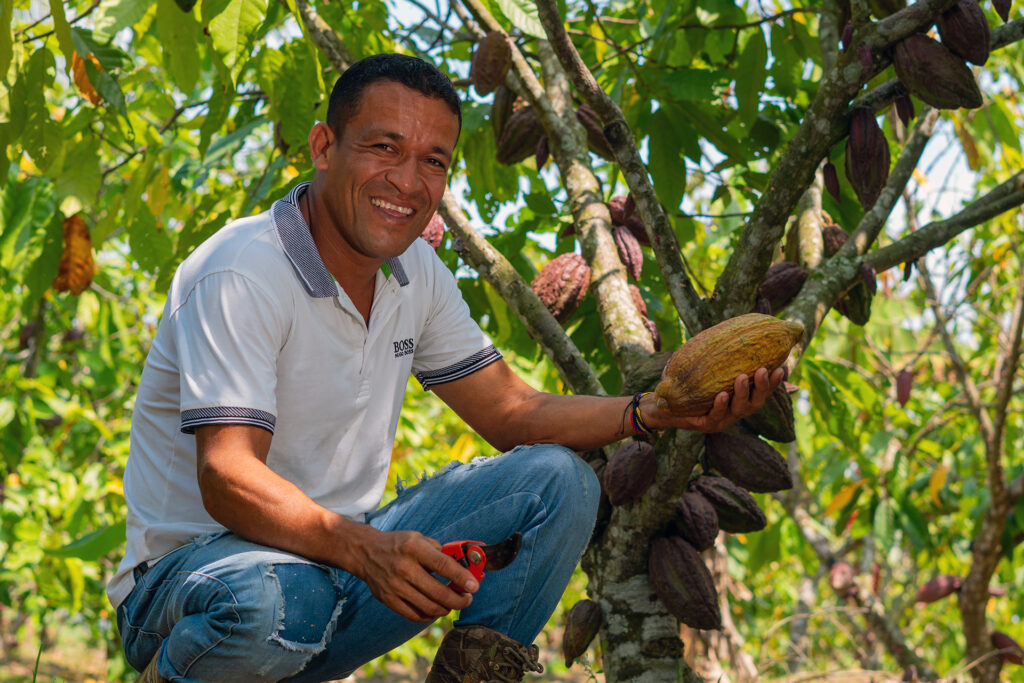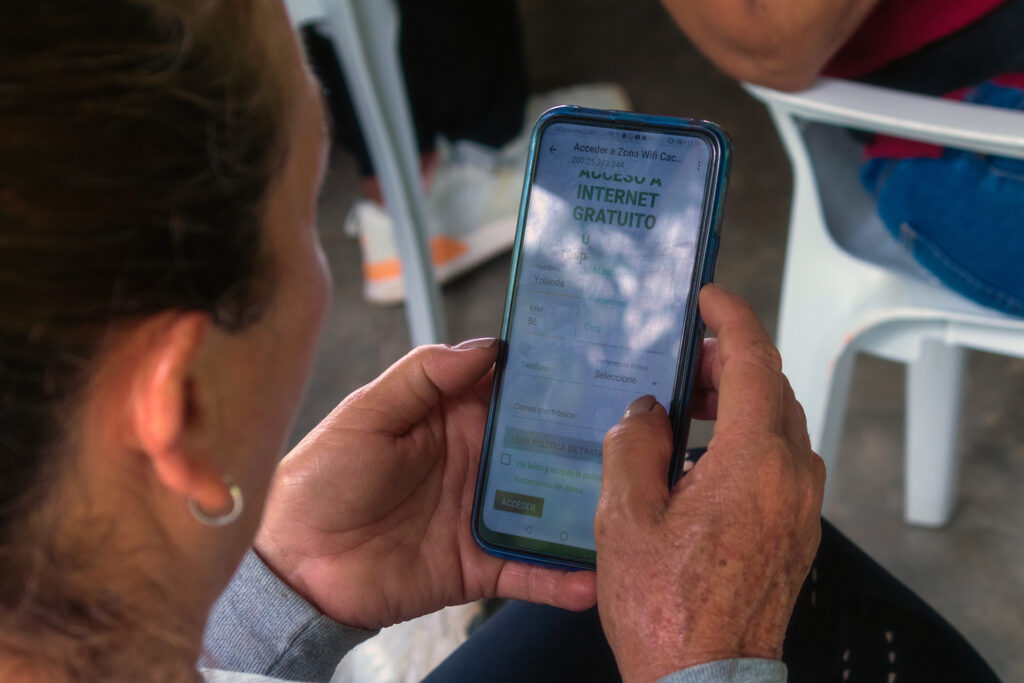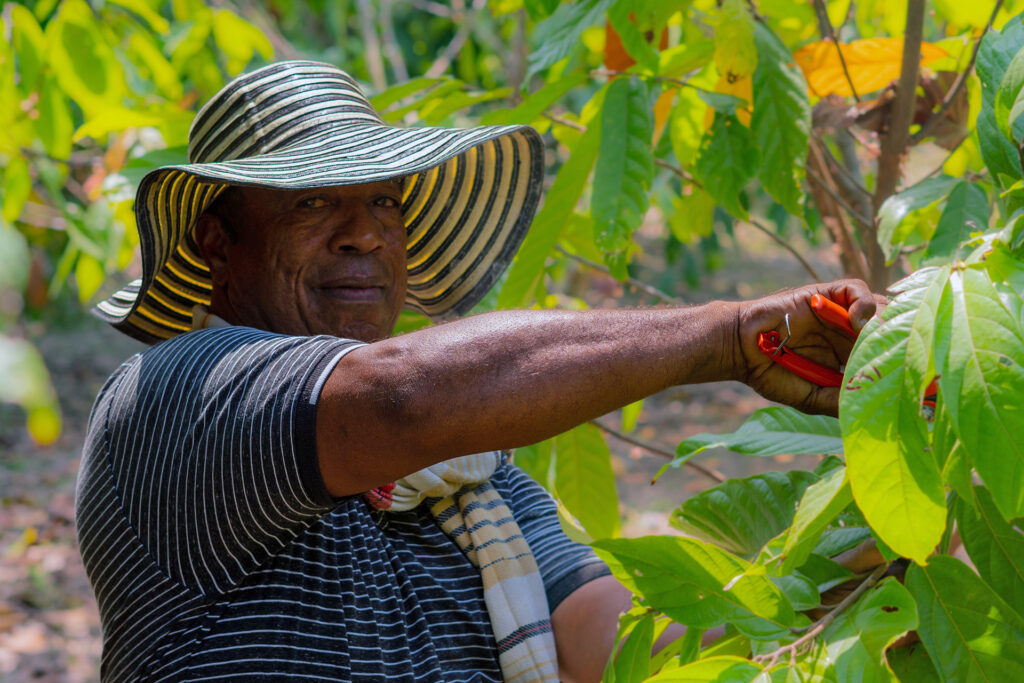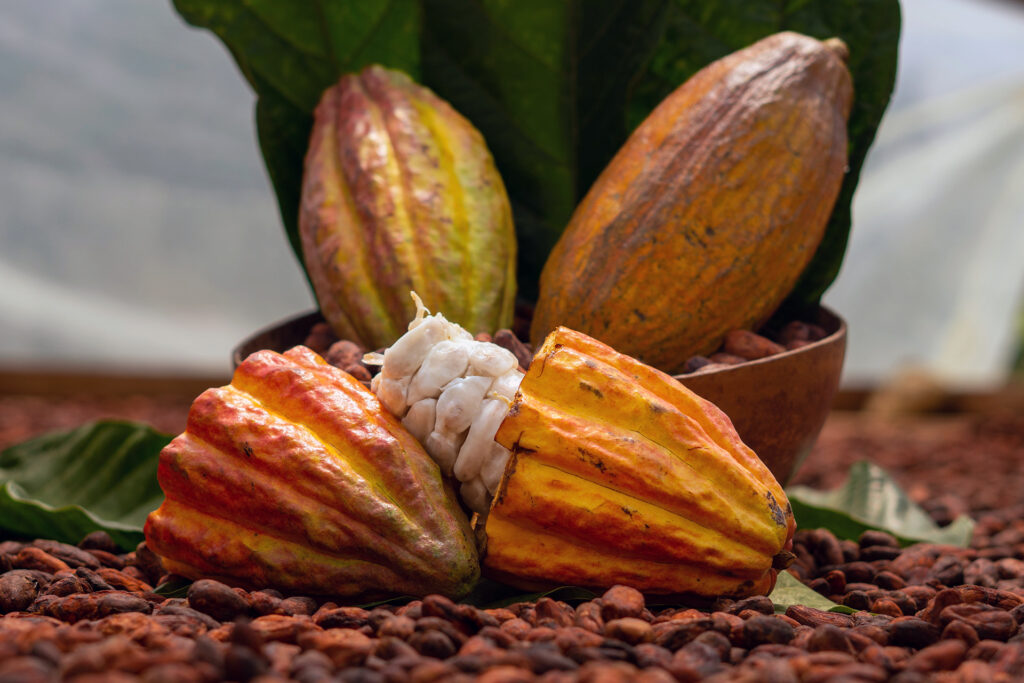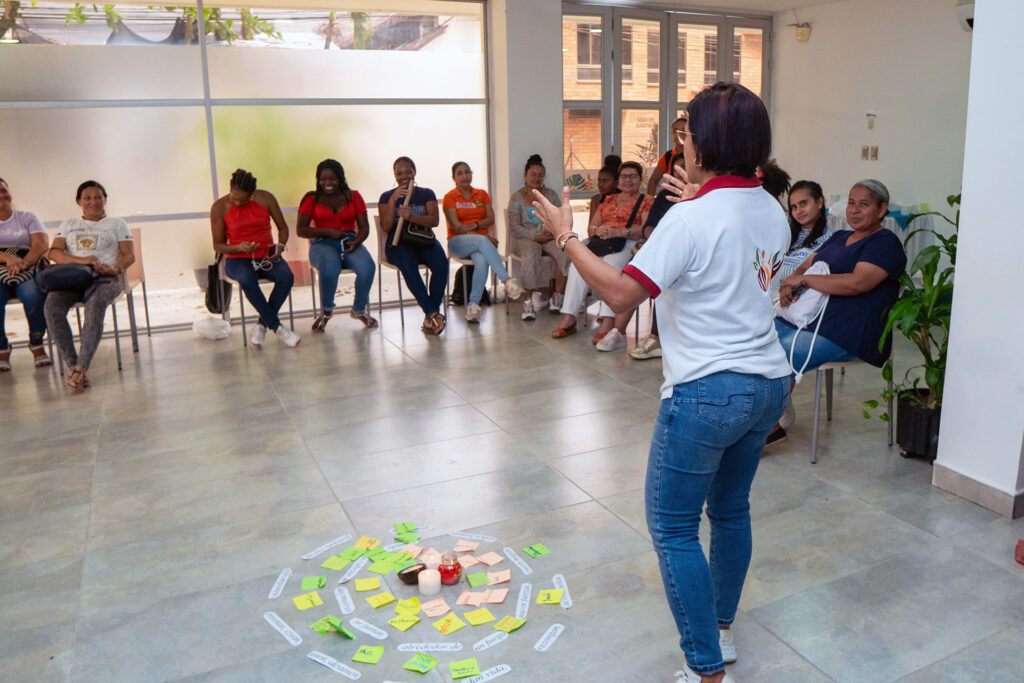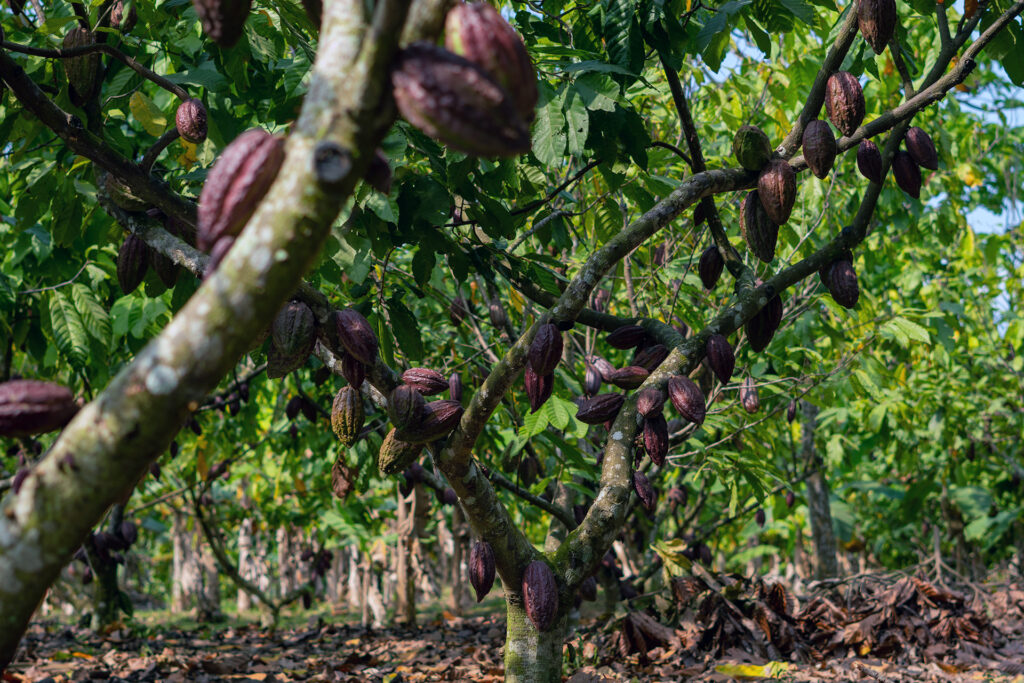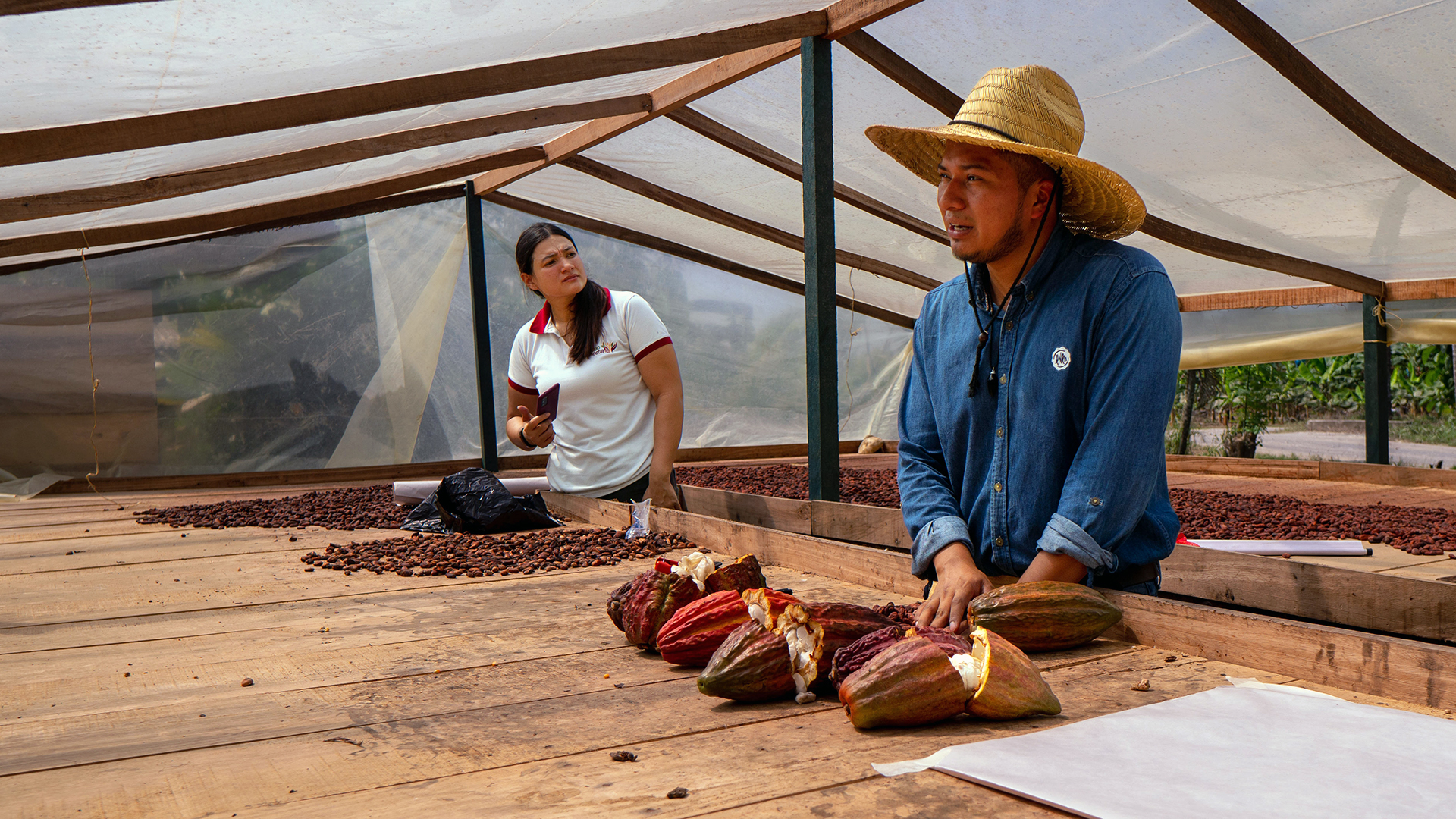
Connectivity helps Colombian cocoa producers reap benefits
A few years ago, after cocoa producer Arnoldo de Jesús Cartagena finished the laborious work of harvesting and preparing his crops for sale, the real hard work began. Cartagena’s crops are in the remote Colombian region known as La Teca, hours away from the port municipality of Turbo and the buyers who would be interested in purchasing his harvest.
But how much were Cartagena’s crops worth? Because he lived in an area without internet connectivity, he had no idea if he was getting a fair price as the numbers fluctuated in real-time. Would it be better to sell now or wait until the prices rose again? Without any connectivity and limited options to access the internet, Cartagena was left in the dark.
“When we started selling cocoa, we had no way to access the prices,” Cartagena recalled. “We would have to walk for miles just to access … communication.”
Cartagena was hardly alone in his frustration. Many Colombian cocoa producers are in isolated parts of the country like the Antioquian Urabá, covered in dense forest and mountainous terrain. While that may be ideal for growing cocoa, it’s a detriment when it comes to staying connected to the world at large for business and educational purposes.
The lack of connectivity became more pronounced as Colombia ramped up its efforts to become a major cocoa exporter. According to the International Cocoa Organization (ICCO), in 2020 Colombia ranked 10th in the world in terms of annual cocoa production. The country exports cocoa and its byproducts to 70 countries, with Mexico, Malaysia, Germany, the United States and Argentina the top export destinations for cocoa beans, representing more than 90 percent of the market share.
At 19 percent, the U.S. is the top buyer of Colombia’s cocoa byproducts and confectionery items, generating $15.8 million. In 2021, Colombia produced 65,174 metric tons of cocoa with a planted area of 194,428 hectares. That is a 36.5 percent increase in cocoa production since 2014.
To ensure these producers would have a fair shot and the ability to access outside resources, Microsoft joined forces with the US Agency for International Development (USAID), the Ideas for Peace Foundation and the National Chocolates Company to create Cacao Conecta, a global development partnership aimed at benefiting cocoa farmers, women and young people.
Some of the benefits for the producers in the program to help improve cocoa development included soil analysis, technical visits to expert growers, and kits with cocoa processing tools. Another major component of the program was the installation of connectivity points in strategic locations and the provision of digital skills training to cocoa producers.
“One opportunity that was identified was how to promote the importance and use of technology and then, obviously, how to solve the connectivity issues that we know are very complicated,” Natalia López, director of Cacao Conecta, said. “For example, we have an indigenous community that is about a three-hour walk from a cell phone signal.”
To help address the problem, in 2021 Microsoft and its partner ANDITEL installed 26 points of connectivity throughout rural Colombian regions near the municipalities of Turbo, Apartadó and Dabeiba through its Airband Initiative, which was launched to bring transformative connectivity to unserved and underserved communities around the world.
Microsoft used different technologies, depending on the difficulties of the points. Some points were connected with satellite technology, while others used a technology called TV White Spaces. The project invested in infrastructure, like towers and electricity, to mount the radios and antennas to help close links and produce connectivity.
Since the project was launched three years ago, the impact has been groundbreaking, helping to even the playing field and increase profits for more than 300 producers, according to Cacao Conecta.
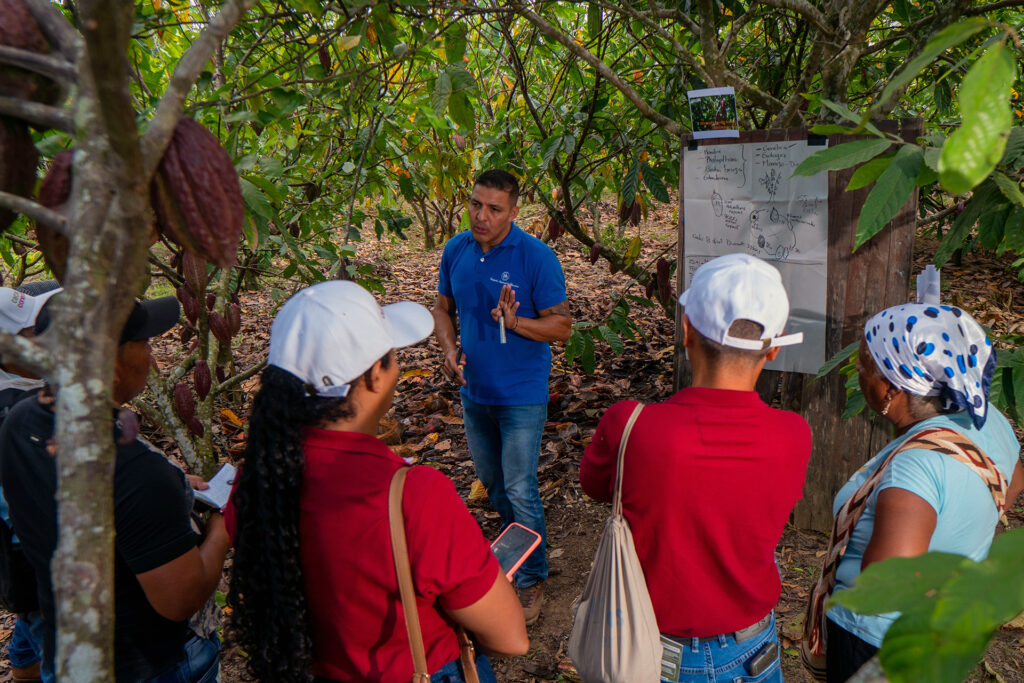
“Now, it’s very easy to know the prices, almost instantaneously,” Cartagena said. “We can see the price changes and we can take advantage of it because the communication is very fast. That generates a lot of profit for us, both in time and economics. (Connectivity) is a tool that, for us, has a lot of value.”
The ability to access the internet has also improved educational opportunities throughout these regions, with schools now able to broaden learning through virtual classrooms and online programs.
“It has been very satisfying that Cacao Conecta arrived because it has benefitted many children,” Yuliana Campo Páez, a young cocoa producer from Manuel Cuello, a village of Turbo, in Antioquia, said. “Young people now have the possibility of carrying out tasks as well. They don’t have to travel to other places or municipalities. We feel very grateful.”
Part of Cacao Conecta’s mission is opening doors for more producers to succeed in the cocoa field, especially women. Their contributions to the growth of the industry have often been overlooked. Now, with connectivity, training and added resources of the alliance, these producers are helping make an impact.
“This component is born from that need to first balance the burdens in families, because we know that women are usually the ones who assume the tasks and the roles of care within the home,” López said. “That equal distribution of burdens also identifies those women’s skills that have suddenly not been recognized and that are important to take into account. The message for men and women is, if we are co-responsible in all the activities, both of the home and the crop, can we have even higher yields and higher productivity as well?”
For Luz Adriana Campo Páez, a cocoa producer in the Quebrada de Los Indios region, connectivity allowed her to get important training and maintenance lessons to help improve her crops.
“We saw a virtual cocoa management and maintenance course where we were taught how to manage pests, cocoa diseases and different pruning methods,” she said. “In the course we saw everything, the whole process of cocoa, from the moment it is planted until it is produced and harvested and then it is dried and sold.”
“Thanks to this point of connectivity, we have seen results because we previously had a cocoa crop where pruning was not done and where diseases were not managed. When one went to collect it, it was very little (because of the disease). Now those diseases are not seen. In other words, there is already a change, so it has helped us a lot.”
Since the beginning of the project in May 2021, the Cacao Conecta participants have seen an average increase in productivity of 15 percent, to an average of 518 kilograms per hectare from 450 kilograms per hectare year over year.
“Connectivity has been a window to the world for producers and, they are working for a purpose, which is to improve the well-being of their own and their families,” said Luis Daniel Correa Rendón, Technical Coordinator for Cacao Conecta. “So, by being able to access the information and by being able to have those doors to the open world, they can in real time solve difficulties that they have in their crops, or even make a call to the field technician who visits them every two months and he can tell them what to do.”
While connectivity has allowed cocoa producers to improve their work lives, they all agreed that the most important development since gaining internet access is how it has improved their communities as a whole. From education opportunities for children to closing the gender gap to achieving a sense of pride in their accomplishments, connectivity has been a critical step.
“I am fully grateful because thanks to the program, I have been provided leadership and confidence,” Yuliana Campo Páez said. “It has also been satisfying because I have learned a lot, and many young people, like me, have also been inspired.”
“Well, as a producer, with all this process that we have had, the first thing I can offer is my quality product,” said Luz Nedis Oviedo Viloria, a producer from the La Balsa region. “It is a quality product for the people because they consume cocoa. And as a woman I can be an agent of change for the country because each of the trainings they have given us has made me to be better. Now I can show that things can be done.
“The project came to transform our lives and connect us as territories. And to close the great gap that has existed between communities and cities. This project arrived, made a diagnosis, focused on dealing with it and today we are seeing the results.”
Top image: Training is a key element of the Cacao Conecta project. Producers Jhorman Esteban Urrego Posso and Gabriela Iguita Castrillón learn best practices for harvesting their crops. Image by Cacao Conecta.

